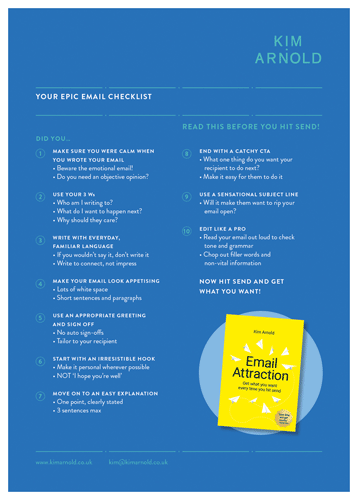Most of us have worked remotely at one time or another – whether we’ve been travelling, working from home or cheekily checking our inbox from a sun lounger on holiday.
But this…this is different. Now we’re all working remotely, all of the time. So how do we get our voices heard and our tasks executed in this new world order? After all, it can be hard enough to get our point across in a face-to-face meeting.
And how do we ensure that ‘distant’ only describes our physical status, not our relationships with co-workers and clients?
Here are three strategies to help you build connections and communicate with impact in our remote working world.
1. Step away from the email
Email can be a great tool for remote communication – it’s certainly one of the most convenient right now. You might not feel like jumping on a video call if there are kids screaming in the background. After all, good old email won’t betray the fact that you have socks drying on the radiator behind you.
But do use voice and video calling when you need to strengthen relationships or have a difficult conversation.
Facial expressions and tone of voice give us vital clues about someone’s mood and motives. These are much harder to fathom over email, where we can easily misconstrue intentions or confuse a hastily written one-liner with rudeness.
But be respectful. If you do want a video call with someone, ask them when’s a good time, rather than just putting it in their diary. No-one wants to be caught out in their pyjamas (or worse).
2. Be more human
During tough times like these, formal corporate language feels completely out of place. Stiff, stuffy corporate-speak like ‘It is expected that all team members adhere to our remote working policies’ go down as well as a failed broadband connection right now.
This is because formal, business language creates distance between people instead of connection.
Lawyers, in particular, so used to the precision of legal writing, can sometimes mistakenly confuse formality with professionalism. Or assume that informal always means sloppy.
Informal can still be professional if you write as you speak. So, to achieve a more conversational tone:
- use contractions – so ‘it’s’ instead of ‘it is’ and ‘you’re’ instead of ‘you are’
- swap jargon-y business words like ‘utilise’ and ‘commence’ for their easier-going cousins ‘use’ and ‘start’
- avoid the passive voice (‘Employees are invited to participate’) and use the active voice instead (‘We’d like you to take part’)
- use ‘we’ and ‘you’ to create a connection – it’s like saying someone’s name
3. If you do have to email, write emails people actually want to read
We’ll all be sending and receiving thousands of emails over the coming months. If we want to make sure that ours get opened, read and actioned, we need to change the way we approach them.
How? We have to measure our success, not by the number of emails sent:
‘20 emails done and it’s only 11.30! Time for some day-time TV!’
but by output
‘8 out of the 10 emails I sent have had a reply, with 50% of the actions I asked for completed so far – not bad.’
And to boost your open, read and response rates, try these tips:
Make them pretty – Think about your email like a dating profile picture – if it doesn’t look great no-one’s going to swipe right, or in the case of email, read it. So, make sure it’s easy on the eye.
As a rule of thumb, you want a maximum of 3 paragraphs with no more than 6-8 sentences overall. (Less than you thought, right?)
Leave space between paragraphs and lines (set line spacing to 1.15 or 1.5 – it makes a huge difference).
And if you’re on a desktop, try drafting your email in a small window. This will mimic readability on a mobile (emails that look fine stretched across a massive Mac screen can look like a whopping wall of words on a mobile).
End on a high – Finish with your call-to-action – don’t play hide and seek with it in the middle of your email or surround it by waffle. Be specific – what exactly do you want them to do, how and when?
Only ask for one action per email. If you really have to ask for more, number them in a list and give each one a deadline if appropriate.
Be a headliner – you might follow all my advice but if you give your email a boring title you might as well go home (if you weren’t already at home, of course.)
What’s a boring title? Something like:
- FYI
- Update
- Feedback request
- Minutes from today’s meeting
Instead:
- use verbs to get people moving: ‘Rewrite this last paragraph?’
- harness the curiosity factor: ‘Good idea/terrible idea?’
- try a cliff hanger: ‘David reckoned we share an interest in…’
* originally published by Global Leaders In Law


